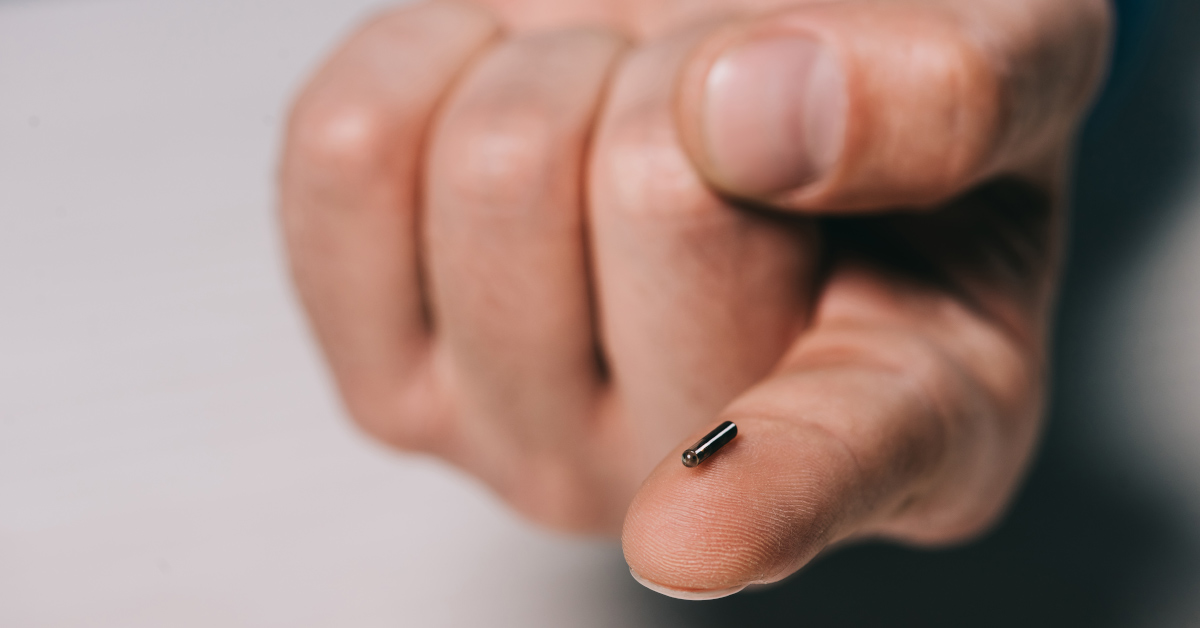Patrick Paumen is living in a futuristic sci-fi movie. The 37-year-old, a security guard from the Netherlands, can go shopping without bank cards, cash, or even a smartphone. Instead, he swipes his own hand on the card reader and the payment goes through. He’s been paying this way since 2019, using a microchip implant in his skin. “The reactions I get from cashiers are priceless!” said Paumen. He explained that the procedure “hurts as much as when someone pinches your skin.”
This Microchip Can Replace Bank Cards
The microchip implant was first designed in 1998 but it has only recently become available commercially. Specifically, the British-Polish firm, Walletmor, has become the first company to sell them. “The implant can be used to pay for a drink on the beach in Rio, a coffee in New York, a haircut in Paris — or at your local grocery store,” says founder and chief executive Wojtek Paprota. “It can be used wherever contactless payments are accepted.”
The chip weighs less than a gram and looks slightly larger than a grain of rice. It’s made up of a tiny microchip and a tiny antenna enclosed in biopolymer, a naturally sourced material that has similarities to plastic. Paprota explained that the microchip is completely safe with regulatory approval. Plus, it begins to function immediately after the 15-minute procedure and won’t shift its position. Keep in mind, that there’s no battery or power source needed and it only activates when close to a paying terminal to avoid accidental spending.
Walletmor has sold over 500 of these microchip implants in Europe since its release in 2021. It’s now available in the U.S. for $299. [1] The company utilizes near-field communication (NFC), which uses the same kind of no-touch payment technology in smartphones. In contrast, other implants use radio-frequency identification (RFID), which is used in bank cards.
The Debate on Chip Implants
While many people may consider getting a microchip implant, many others would refuse, raising concerns over security and the invasiveness of the procedure. But Paumen dismissed these worries. “Chip implants contain the same kind of technology that people use on a daily basis,” he said, “From key fobs to unlock doors, public transit cards like the London Oyster card, or bank cards with contactless payment function. The reading distance is limited by the small antenna coil inside the implant. The implant needs to be within the electromagnetic field of a compatible RFID [or NFC] reader. Only when there is a magnetic coupling between the reader and the transponder can the implant be read.”
As far as security goes, he does not wonder about trackers hacking the device. “RFID chips are used in pets to identify them when they’re lost,” he said. “But it’s not possible to locate them using an RFID chip implant — the missing pet needs to be found physically. Then the entire body gets scanned until the RFID chip implant is found and read.”
Read: Thousands Of Swedes Are Inserting Microchips Under Their Skin
Nevertheless, although the chips may be harmless now, there are concerns that future advancements could track people’s whereabouts and data. What about security then? According to financial technology expert Theodora Lau, implant chips are only “an extension of the internet of things”. This means this is just a new method of connecting and transferring data.
She validates the benefit of convenient paying; however, she notes that it could be risky to embed implants carrying personal data. “How much are we willing to pay, for the sake of convenience?” she said. “Where do we draw the line when it comes to privacy and security? Who will be protecting the critical infrastructure, and the humans that are part of it?”

Risks or No Risks?
Similarly, Nada Kakabadse — professor of policy, governance, and ethics at Reading University’s Henley Business School — also cautions against embedded microchips. “There is a dark side to the technology that has a potential for abuse,” she said. “To those with no love of individual freedom, it opens up seductive new vistas for control, manipulation, and oppression. And who owns the data? Who has access to the data? And, is it ethical to chip people like we do pets?” She warned that this could cause “the disempowerment of many for the benefits of a few”.
On the other side, Steven Northam, senior lecturer in innovation and entrepreneurship at the University of Winchester, dismisses these cautions. He is also the founder of BioTeq, which has produced chip implants since 2017. This company targets people with disabilities to open doors automatically. “We have daily enquiries,” he said, “And have carried out over 500 implants in the UK, but Covid caused some reduction in this. This technology has been used in animals for years. They are very small, inert objects. There are no risks.”
Paumen definitely believes so. He calls himself a “biohacker,” a term for people who implant technology into their bodies to improve themselves. He now has 32 implants, including some that open doors and embedded magnets. “Technology keeps evolving, so I keep collecting more,” he said. “My implants augment my body. I wouldn’t want to live without them. There will always be people who don’t want to modify their body. We should respect that — and they should respect us as biohackers.” [2]
Keep Reading: You will get chipped — eventually

